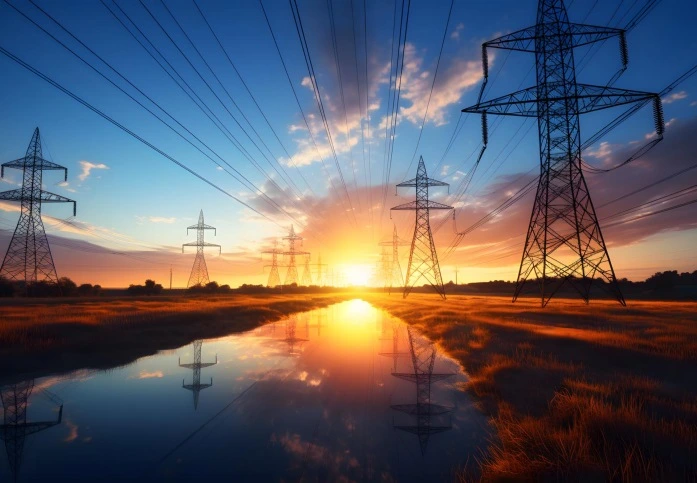Introduction
Digitalization is changing the way the utility industry operates, making it more efficient, reliable, and sustainable. Today, power and utility efficiency is not just about delivering electricity or water; it’s about using advanced technologies to optimize every stage of the process. As the world demands more from its energy systems, the digital transformation of utility companies is becoming essential for them to remain competitive and meet regulatory and environmental goals.
The utility industry is undergoing a major shift. With increasing demand, aging infrastructure, and the need for cleaner energy, companies are turning to digital transformation in the utilities sector to address complex challenges. Digitalization involves integrating smart technologies, such as sensors, artificial intelligence, and data analytics, into daily operations. This shift is helping utilities improve efficiency, reduce costs, and deliver better service to customers.
What is Digitalization in Power and Utilities?
Digital transformation in the utility industry refers to the adoption of digital tools and strategies to modernize the sector. This includes everything from smart meters and automated control systems to cloud-based data platforms and predictive maintenance. According to the International Energy Agency (IEA), digital technologies could save the global power sector up to $80 billion annually by improving grid management and reducing outages.
Digital transformation trends in utilities encompass the utilization of artificial intelligence for demand forecasting, Internet of Things (IoT) sensors for real-time monitoring, and blockchain for secure transactions. These innovations are helping utilities become more agile and responsive to changing market conditions.
Challenges Faced by Power and Utility Companies
Despite the benefits, the utility industry faces several challenges on the path to digitalization:
- Aging Infrastructure: Many utilities operate with equipment that is decades old, making it difficult to integrate with new digital tools.
- Cybersecurity Risks: As utilities become increasingly connected, they become more vulnerable to cyberattacks. According to a 2023 IBM report, energy was among the top three most targeted sectors for cyber incidents, as supported by the IBM Security X-Force Threat Intelligence Index 2023. According to the report, the energy sector was the third most targeted industry globally for cyberattacks in 2022, accounting for 15.3% of all attacks, following finance and insurance (28%) and manufacturing (18.2%)
- Regulatory Compliance: Utilities must navigate a complicated web of regulations, which can slow the adoption of new technologies.
- Energy Efficiency Challenges: Balancing the need for reliable service with the push for sustainability requires careful planning and investment.
Despite these limitations, the benefits of digital transformation are driving utilities to invest in new solutions.
How Digitalization Drives Power and Utility Efficiency
Power and utility efficiency is all about delivering more with less—less waste, less downtime, and less environmental impact. Here’s how digital energy solutions are making a difference:
- Predictive Maintenance: AI-powered analytics can predict equipment failures before they happen, decreasing downtime and maintenance costs.
- Smart Grids: Digitalization enables real-time monitoring and control of the grid, allowing utilities to respond quickly to changes in demand or supply.
- Automated Metering: Smart meters provide customers and utilities with real-time data on energy use, enabling them to identify waste and optimize consumption.
- Demand Response: Digital platforms allow utilities to adjust supply and demand dynamically, reducing peak loads and lowering costs.
These digital energy solutions are at the core of energy digitalization, helping utilities deliver better service while meeting sustainability goals.
Benefits of Digitalization in Power and Utility Operations
The benefits of digital transformation in the utility industry are clear:
- Cost Savings: Digital tools reduce operational costs by automating routine tasks and improving asset management.
- Improved Reliability: Real-time data and predictive analytics help prevent outages and improve response times.
- Enhanced Sustainability: Digitalization facilitates the integration of renewable energy sources and enables utilities to track and reduce carbon emissions.
- Enhanced Customer Experience: Smart technologies enable personalized services, expedite problem resolution, and provide more transparent billing.
A study by Deloitte highlights that utilities adopting digital strategies have reported significant improvements in operational efficiency and notable reductions in customer complaints, underscoring the value of digital transformation in enhancing both performance and customer satisfaction.
The Future of Digitalized Utilities
Looking ahead, the utility digital transformation will continue to evolve. Future trends include:
- Decentralized Energy Systems: As more customers generate their power with solar panels and batteries, new digital tools are required for grid management.
- AI and Machine Learning: These technologies will play a bigger role in everything from demand forecasting to outage management.
- Blockchain: Secure, transparent transactions will become more important as utilities manage complex energy markets.
- Smart Energy Management Systems: These systems will optimize energy use across entire cities, not just individual buildings.
The energy sector digital transformation is creating a future where utilities are smarter, more flexible, and more sustainable.
Conclusion
The utility industry is at a crossroads. By embracing digital transformation in the utilities sector, companies can overcome energy efficiency challenges and deliver better outcomes for customers, shareholders, and the environment. The journey isn’t without obstacles, but the benefits of digital transformation, from cost savings to improved reliability, make it a path worth taking. As digitalization continues to accelerate, the future of power and utility efficiency looks brighter than ever.
FAQs
How does digitalization improve utility efficiency?
Digital utility transformation improves efficiency by automating processes, enabling predictive maintenance, and delivering real-time data for better decision-making. For example, smart sensors can detect leaks or faults instantly, enabling quick repairs and minimizing downtime.
What are examples of digital tools in energy management?
Common digital energy solutions include smart meters, IoT sensors, AI-powered analytics platforms, and automated demand response systems. These tools help utilities monitor and optimize energy use, forecast demand, and manage distributed energy resources.
What’s the ROI of digital transformation in utilities?
The return on investment for utility digital transformation is significant. Digital transformation enables utilities to reduce operational costs and enhance asset utilization. While exact figures vary, industry studies consistently show that adopting digital technologies leads to increased efficiency, improved asset management, and enhanced service reliability for utility companies.
What is the relationship between power and efficiency?
Power and utility efficiency is about maximizing output while minimizing waste and costs. Digitalization helps utilities achieve this balance by optimizing operations and integrating renewable energy.
How do smart energy management systems improve utility efficiency?
Smart energy management systems utilize real-time data and automation to optimize energy usage, minimize waste, and enhance grid stability. For example, the city of Amsterdam reduced its energy consumption by 15% after implementing a city-wide smart energy management system.
What are the leading digital transformation trends in utilities?
Key digital transformation trends include the adoption of AI and machine learning, the use of IoT for real-time monitoring, the integration of blockchain for secure transactions, and the deployment of smart grids and decentralized energy systems.




